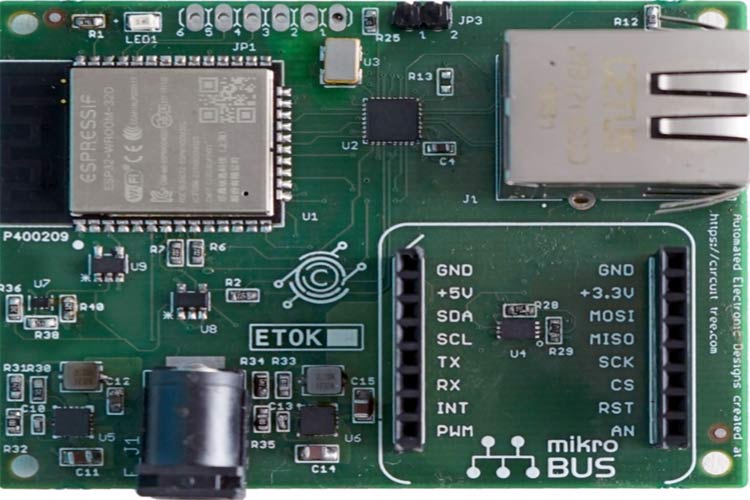
Developing a new hardware product is no doubt a herculean task filled with uncertainties which if not properly managed, could increase the project’s lead time, delay the launch, and cost the company tons of money.
Large Corporates usually have the experience, relationship, money, and people bandwidth to mitigate these risks, but for startups and individual entrepreneurs, luxury does not exist. For this reason, today’s article will focus on sharing some tips and tools that could be helpful in ensuring you don’t get thrown too far away from your project development timeline. If you are completely new to product development you can also check out this ultimate guide for Electronic Product development from John Teel.
Due to differences in the type of products and their requirements, there is no one-size-fits-all approach to mitigate the risks posed by uncertainties, but some pretty standard wisdom exist and can be deployed to ensure most of the eventualities on the product development road, are well planned for. To make it easy to follow; we will be evaluating them under four main subheadings.
- User Research
- Mitigating Risks During Design and Engineering
- Manufacturing and Establishing Relationships
- Certifications
User Research
While user research is a never-ending cycle, before you begin working on getting the first version of your product to market, it is imperative that you consult with potential users extensively and understand all the basic features required.
It is important to note that the “users” at this point include; regulators, potential sales channels, etc., not just your potential end-users.
The first version of your product, may not have “killer”, and awesome features, but it must come with features that make it acceptable to people in the target category, as missing out on any of those, before the product development starts, could lead to the need for avoidable changes as things proceed.
Either during or after the user research, the usual next step is to create a product requirement document. The product requirement document usually features things ranging from how the product is expected to look and work, to how and where it will be sold. It is usually a quite bulky document that serves as a look-up doc for developers and engineers, but these days, its more streamlined with just enough details. Having these in place will improve communication (which is usually a problem) and ensure designers have a full understanding of what the product entails and can make strategic and informed decisions while designing the product.
A good product requirement document template I have had fun using is attached here for your reference: Product Requirement Document.
Mitigating Risks During Design and Engineering
Second, to only Manufacturing, more time is wasted during design than any other stage of the product dev process. There are different problems and tips tied to this section and I will take them one after the other (in no specific order) to make it easy to follow.
Spend more time sharpening the ax than cutting:
Before selecting components to use, run a predesign of your project to identify what the requirements and key components are. Draw up selection criteria (e.g. cost, Low-Power, IOs, etc.) for key components based on your product requirements. Certain component manufacturers maintain applications on their website that recommend microcontrollers, ICs, sensors, etc. based on criteria provided by users, use them. You can also check the below articles to get some insights into the selection process.
- How to select a Microcontroller for Embedded Applications
- How to select the right PCB Design Software
- How to select an IoT Platform for your devices
- Selecting between Microcontroller and Microprocessor
Leverage on Reference Designs:
Reference designs exist for this sole reason to help developers to speed up the design process. From microcontrollers to regular ICs and Sensors, component manufacturers provide reference designs including schematics, source codes (where applicable), and sample application/use case. All of this could reduce the time it takes to figure out where each component should go and how it should be used.
Design for Manufacturing:
Often, due to the need to test a lot of ideas at the beginning, Startups often design prototypes without considering the time, cost, technical difficulty, practicality, and availability of the components needed to produce them on a large scale.

For a startup without a lot of money or time, you can’t afford to do this because as the project moves closer to manufacturing, the errors pop out and the need to switch components A or make changes to B could lead to delays in the product launch. To mitigate these risks, Startups and Individuals can;
- Prototype using evaluation kits and breakouts boards of the major components that will be used in mass production.
- Use components with a large ecosystem of potential replacements
- Understand the capacity of your proposed manufacturers, and the specifications they work with.
Leverage on Design Automation/Assistance Tools:
Technology is advancing and either by using rule engines, AI and other technologies, a lot of design automation tools are being developed. These tools vary in functionality but could all, in one way or the other, accelerate the development of your product. You will agree It’s difficult to provide a comprehensive list of those tools here, but two which I’ve really had fun using in recent times include InspectAR and Circuit-Tree.
Circuit-tree allows you to create Schematics and PCBs by just entering your project specification and selecting the components you like to be used. The tool is still under development but it could be very useful to teams with founders looking to cut down on cost and time for their electronics design.

Manufacturing and Related Relationships
Most of the risks startups experience during manufacturing is always a result of poor planning before or during the design phase. Often times they wait till after designing the product before they start talking to manufacturers and suppliers which is a terrible “cart before the horse” approach. After concluding your user research and your pre-design (better during it), you should immediately start making efforts to establish supply chain relationships for the key components you will be using and also identify potential manufacturers, who should have experience with similar products.
By identifying these manufacturers early and having casual discussions(protect your IP) with them about the products they make, you would gain a lot of insights on how your product could be designed and also get information on the specifications of their machines and other equipment, so your designs can be aligned to them.
It’s even more important for part sourcing and supply chain management that these discussions start early. Countless examples of manufacturing hold-ups due to a shortage of certain components abound. There are also scenarios where designs are done with certain components, only for them to be discontinued by the manufacturers a few weeks/months to manufacturing, staring up the scarcity and driving up the cost.
To mitigate these risks and keep your product development plans on track, startups and individuals could;
- Ensure there is someone on the team with experience around manufacturing a similar product. This could be a core member of the team or a consultant.
- Establish relationships (casual, if you like) with potential manufacturers early.
- Bring on a supply chain expert. Inhouse or consultant.
- For first-time hardware founders, talk to as many people in that space as possible. By leveraging on their experience, you will most likely save yourself thousands of dollars in time and mistakes.
Certification
Certification is one of the most difficult and time-consuming part of bringing a new hardware product to market. For a standard product to be sold in a standard setting, you will definitely need to acquire certain trade rights and pass some tests. Can’t help with the trade rights (just a bloody engineer here) but one approach to mitigating the risks around certification tests is by using pre-certified Modules/Components.
Doing this will not only reduce the chances of failing the tests, but also reduce the time, money, and complex design efforts that would have gone into designing those modules and ensuring they meet the standards.
Asides electronic components, you could also decide to use some off-the-shelf parts for your product rather than developing your own. For instance, designing your product to support regular off-the-shelf USB chargers could reduce certification struggles that would have been encountered if you create a custom charger. You can get more information around certification in the EMI/EMC article I wrote here.
In conclusion, while it’s almost impossible to totally avoid challenges that could affect your product timeline, a number of steps could be taken to reduce the risks. The suggestions provided in this article are not final and could vary from product to product.





